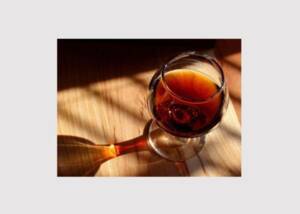Arsenic in wine - that's not fine!
News News blog
Calcium arsenate or calcium arsenic was an important insecticide used in viticulture from 1918 until the 1960s.

In Germany, arsenic-containing plant protection products were not used until 1920, after they were included in the first list of plant protection products. The main area of application was the control of the grape berry moth. This is because the larvae of the grape berry moth attack flowers and grapes, thereby reducing yields; in addition, infested grapes are susceptible to gray mold rot.
The first cases of arsenic poisoning occurred in the Kaiserstuhl region as early as 1925. By spring 1934, 94 cases had been recognized, 66 of which had occurred in the Kaiserstuhl region. However, it was initially assumed that these poisonings had occurred primarily during the application of calcium arsenic dusting agents.
On the Moselle, the use of arsenic-containing insecticides did not appear until 1925, and by 1930 their use was widespread there as well. From 1938, cases of arsenic poisoning also increased on the Moselle. In March 1940, the occupational accident insurance associations had recognized 589 cases of arsenic damage. The cause was finally identified as the pomace wine produced by the winegrowers as a home drink for their own consumption, which contained between 2 and 8.9 mg of arsenic per liter. Arsenic exposure lasted an average of 12 to 14 years; according to one estimate, a winemaker ingested about 53 g of arsenic oxide over this time, of which 47 g was attributed to home drink consumption and only 6 g to ingestion during insecticide application.
After an arsenic-free insecticide was successfully tested, the use of arsenic-containing agents in viticulture was banned by a law passed on November 26, 1942. However, other applications of arsenic-containing pesticides were not banned in the Federal Republic of Germany until 1974.










